Painting by Laura Tedeschi - Gioventú
Monday, 28 February 2011
Youth - Gioventú
This work of mine is from a few years ago and unfortunately the picture quality is not so good...
Etichette:
expressionism,
painting,
portrait
Thursday, 17 February 2011
Democracy, tyranny, and when democracy becomes a paradox - Democrazia, tirannia, e quando la democrazia diventa paradosso
The paintings in this post are by the painter Luca Palazzi, a good friend of mine.
"The question on everyone's mind was always"who should govern? "This question led to definite answers sterile, like, the best, the philosophers, an enlightened ruler, the people, the superior race. It is also an answer false because it assumes good and honest leaders. Karl Popper To be rid of this question, surpassing it with another: "How can we organize political institutions in order to prevent the bad and incompetent rulers do too much damage?"
It serves institutional control of governments. Only for implementing solve the paradox of democracy is the paradox of a people who choose tyranny.
Popper drew a line between freedom and totalitarianism that is expressed in a clear distinction between dictatorship and democracy.
In a democracy the powers of the governors should be limited and the criterion of democracy is this: the rulers in a democracy - that the government - can be dismissed without bloodshed. So if the people in power do not safeguard those institutions which provide the minority the opportunity to work for peaceful change, their government is a tyranny."
"Credere, obbedire, consumare" Painting of Luca Palazzi (From the serie "Berlusconeide & Co.")
"Shining" Painting of Luca Palazzi (From the serie "Berlusconeide & Co.")
"2010 Odissea e basta" Painting of Luca Palazzi (From the serie "Berlusconeide & Co.")
Serve un controllo istituzionale dei governanti. Solo attuandolo risolveremo il paradosso delle democrazie, ovvero il paradosso di un popolo che sceglie la tirannide.
Popper tracciò una linea di demarcazione tra totalitarismo e libertà che si espresse in una netta distinzione tra dittatura e democrazia.
In una democrazia i poteri dei governanti devono essere limitati ed il criterio della democrazia è questo: in una democrazia i governanti - cioè il governo - possono essere licenziati senza spargimenti di sangue. Quindi se gli uomini al potere non salvaguardano quelle istituzioni che assicurano alla minoranza la possibilità di lavorare per un cambiamento pacifico, il loro governo è una tirannia".
Etichette:
democrazia,
expressionism,
luca palazzi,
paradosso,
tirannia
Thursday, 10 February 2011
Through flowers
Paintings of Laura Tedeschi

Paintings of Laura Tedeschi
"The year was dying, very slowly. The sun spread something Tepor veiled, gold, almost spring, in the sky of Rome. All the streets were as popular as Sunday in May. On the Piazza Barberini, the Piazza di Spagna a multitude of cars passed in a race crossing, and double the noise and confusion continued, rising to the Trinity de 'Monti, the Via Sistina, arrived early in the rooms of the Palazzo Zuccari, attenuated.
The rooms are gradually filled up the perfume that exhales fresh flowers in vases. The roses were surrounded by thick and large crystal goblets that certain levavan thin rod like a golden flare in the guise of a lily diamond, in the similitude of those who Sorgon behind the Virgin in the round by Sandro Botticelli at the Galleria Borghese. No other form of a cup equals elegance in this form: the flowers within the prison they seem almost diaphanous spiritualized and give better image of a religious or love offering.
Andrea Sperelli waited in his room, his lover. All things come back into care reveals a special love. The juniper wood was burning in the fireplace and the small tea table was ready.
The clock of the Trinity de 'Monti struck half past three. It lacked half an hour. Andrea Sperelli rose from the couch, where he was lying, and went to open a window and then gave some steps in the apartment, then opened a book, he read a little, closed it, then looked around something, his eyes doubting. The anxiety of leave it stung so keenly that he needed to move, to work, to distract the inner pain with a physical act. He leaned toward the fireplace, took the tongs to rekindle the fire, put on the pile burning a new piece of juniper. The pile collapsed, right on the coals sparkle rolled metal sheet that protected the carpet, the flame is divided into many small bluish languages disappearing and reappearing, the embers fumigation" ..
from: "Il piacere" Gabriele D'Annunzio
photo of Laura Tedeschi
L'anno moriva, assai dolcemente. Il sole di San Silvestro spandeva non so che tepor velato, mollissimo, aureo, quasi primaverile, nel ciel di Roma. Tutte le vie erano popolose come nelle domeniche di Maggio. Su la piazza Barberini, su la piazza di Spagna una moltitudine di vetture passava in corsa traversando; e dalle due piazze il romorio confuso e continuo, salendo alla Trinità de' Monti, alla via Sistina, giungeva fin nelle stanze del palazzo Zuccari, attenuato.
Le stanze andavansi empiendo a poco a poco del profumo ch'esalavan ne' vasi i fiori freschi. Le rose folte e larghe stavano immerse in certe coppe di cristallo che si levavan sottili da una specie di stelo dorato slargandosi in guisa d'un giglio adamantino, a similitudine di quelle che sorgon dietro la Vergine nel tondo di Sandro Botticelli alla Galleria Borghese. Nessuna altra forma di coppa eguaglia in eleganza tal forma: i fiori entro quella prigione diafana paion quasi spiritualizzarsi e meglio dare imagine di una religiosa o amorosa offerta.
Andrea Sperelli aspettava nelle sue stanze un'amante. Tutte le cose a torno rivelavano infatti una special cura d'amore. Il legno di ginepro ardeva nel caminetto e la piccola tavola del tè era pronta, con tazze e sottocoppe in maiolica di Castel Durante ornate d'istoriette mitologiche da Luzio Dolci, antiche forme d'inimitabile grazia, ove sotto le figure erano scritti in carattere corsivo a zàffara nera esametri d'Ovidio. La luce entrava temperata dalle tende di broccatello rosso a melagrane d'argento riccio, a foglie e a motti. Come il sole pomeridiano feriva i vetri, la trama fiorita delle tendine di pizzo si disegnava sul tappeto.
L'orologio della Trinità de' Monti suonò le tre e mezzo. Mancava mezz'ora. Andrea Sperelli si levò dal divano dov'era disteso e andò ad aprire una delle finestre; poi diede alcuni passi nell'appartamento; poi aprì un libro, ne lesse qualche riga, lo richiuse; poi cercò intorno qualche cosa, con lo sguardo dubitante. L'ansia dell'aspettazione lo pungeva così acutamente ch'egli aveva bisogno di muoversi, di operare, di distrarre la pena interna con un atto materiale. Si chinò verso il caminetto, prese le molle per ravvivare il fuoco, mise sul mucchio ardente un nuovo pezzo di ginepro. Il mucchio crollò; i carboni sfavillando rotolarono fin su la lamina di metallo che proteggeva il tappeto; la fiamma si divise in tante piccole lingue azzurrognole che sparivano e riapparivano; i tizzi fumigarono.
da "Il piacere" Gabriele D'Annunzio
Etichette:
expressionism,
flowers,
gabriele d'annunzio,
painting,
roma
Monday, 7 February 2011
Tuesday, 1 February 2011
Ernst Ludwig Kirchner through shadow, light and colors
As one of the first artist ever, produced Kirchner eloquent dialogues and oppositions between painting and printmaking as a classical art forms and photography. He photographed famous models such as his addition to his sculptures and his beautiful portraits. Kirchner staged in such a comparative look between the real 'template' and the finished image. He reveals his personal system of expressive stylization of reality. At the same time he calls just by comparison with the 'reality' the freedom of art from any traditional imperative of mimetic fidelity.
Often, Kirchner was inspired directly from photographs. He developed such as in self-portraits of shadow and light areas in the color photography alienated dissections of physiognomy. Just as he composed figure scenes - as the famous sensual depictions of the couple Hembus of 1930
In general, Kirchner developed in the paintings from the 1920s of contrasts, overexposure and transitions of light, shadow, contour and color, dissolve the image of objects. It created abstracted, flat images with enigmatic image areas and new degrees of freedom. For these image patterns Kirchner himself coined the term "new style".
Often, Kirchner was inspired directly from photographs. He developed such as in self-portraits of shadow and light areas in the color photography alienated dissections of physiognomy. Just as he composed figure scenes - as the famous sensual depictions of the couple Hembus of 1930
In general, Kirchner developed in the paintings from the 1920s of contrasts, overexposure and transitions of light, shadow, contour and color, dissolve the image of objects. It created abstracted, flat images with enigmatic image areas and new degrees of freedom. For these image patterns Kirchner himself coined the term "new style".
All Paintings, Photos and the one sculpture are from Ernst Ludwig Kirchner
Etichette:
ernst ludwig kirchner,
expressionism,
photographie
Subscribe to:
Comments (Atom)
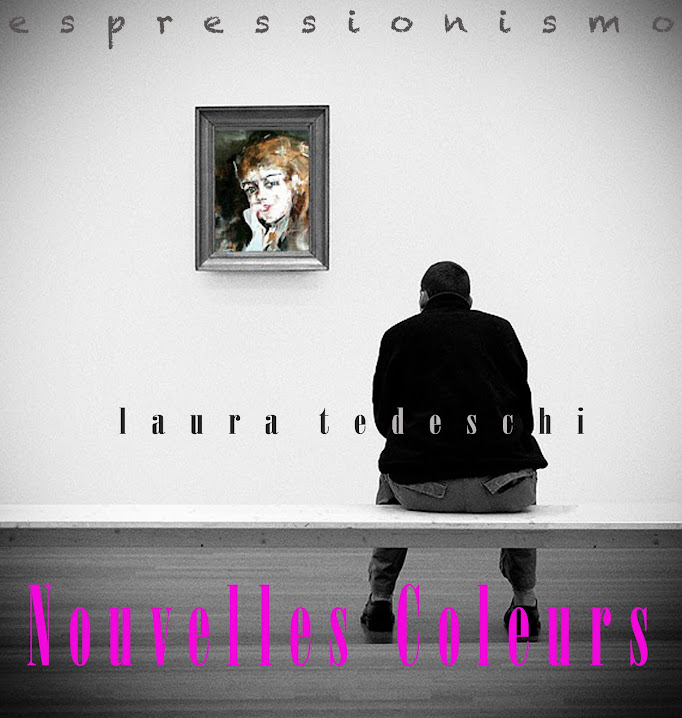








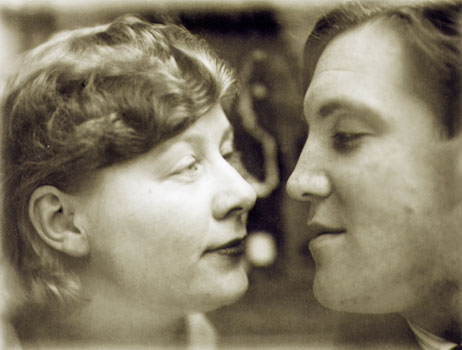
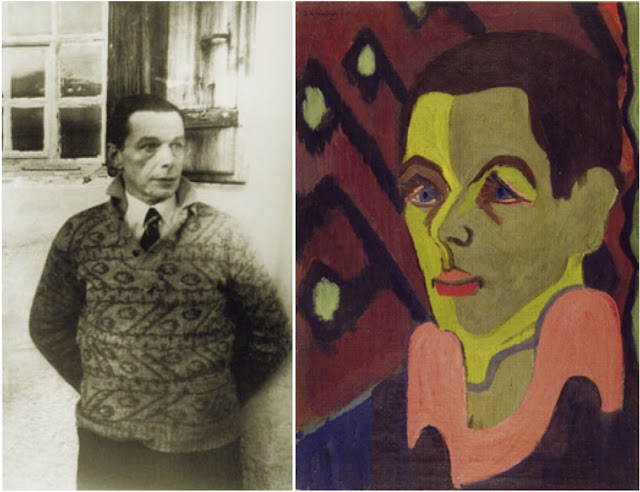

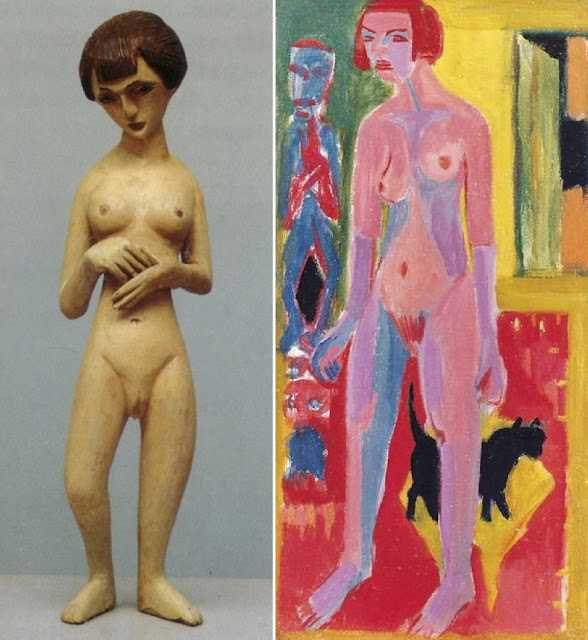







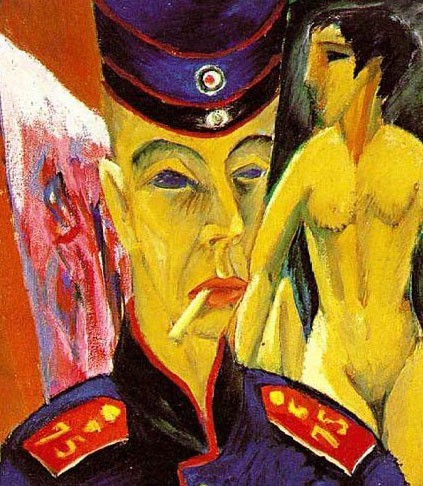
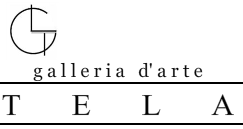
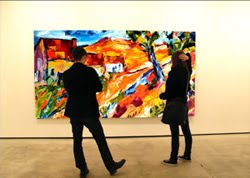
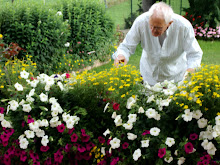



.jpg)









+8.jpg)


